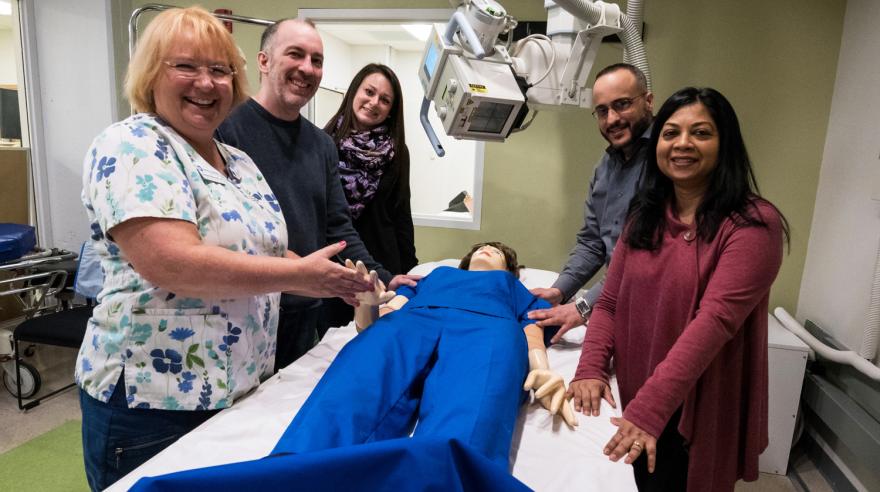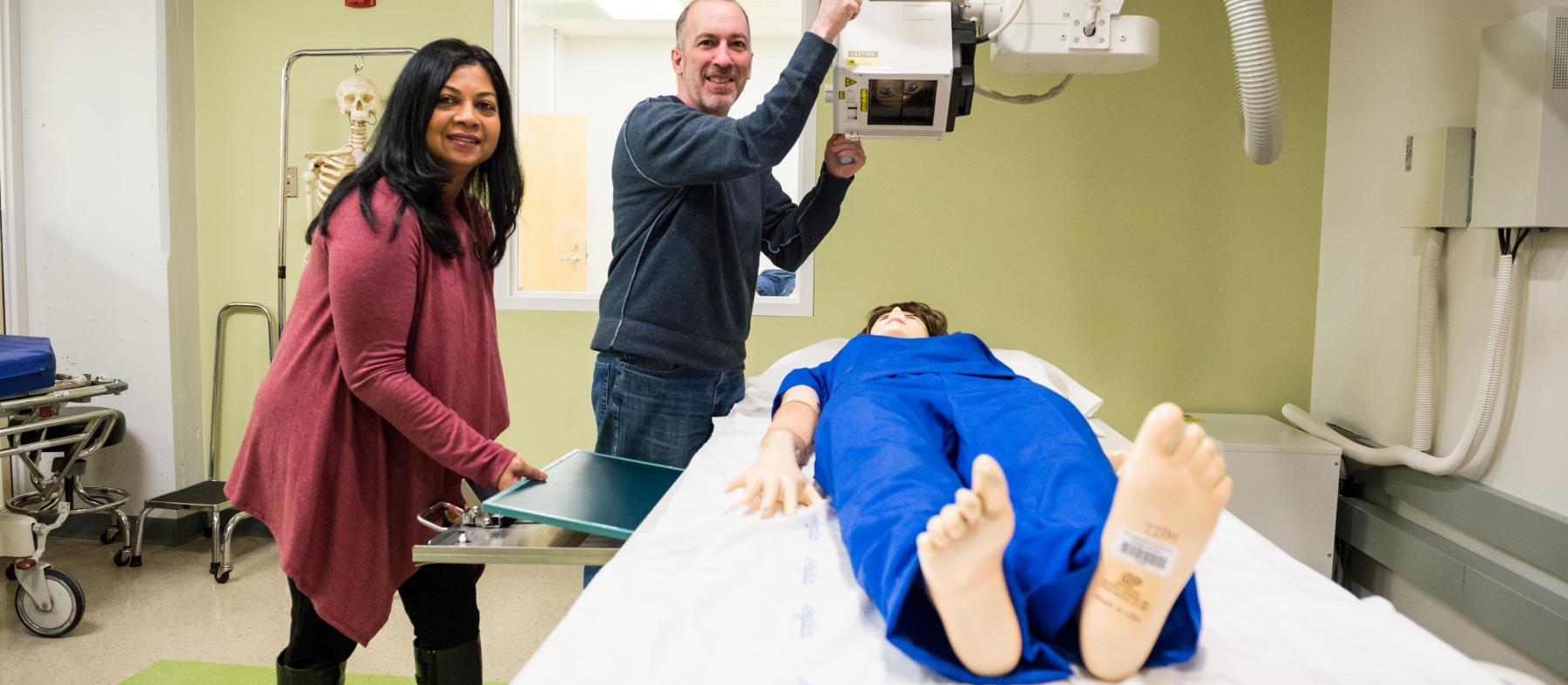Join the healthcare field with a degree in Radiologic Technology. Learn the basics of medical imaging, patient care, radiation safety and advancing medical imaging technologies through real world hands on training supported by technologists working in the field.
Program Overview

What Will You Learn?
Associate of Science
This program prepares you to successfully enter the healthcare workforce upon graduation. The program provides skills-based curriculum that equips graduates with the knowledge and background needed for a rewarding career in the healthcare industry.
Cost
In-State Tuition: $223/credit
Out-of-State / International Tuition: $429/credit
Some programs have additional program fees
Timeline
7 Semesters
72 credits
Learn Online
This program may be completed less than 50% online.
Requirements
- High School Diploma or GED/HiSET.
- Attendance at a Health Information Session or complete FYE 102 with a grade of “C” or higher.
- Complete all Discovery Activities listed at www.QCC.edu/radiologic-technology/admission-health-transfer-articulation-agreements
- English: Placement into college level English.
- Mathematics: College level mathematics course or QMAT placement score > 21 or appropriate multiple measures placement.
- Biology: Minimum grade of “B” in high school biology or “C+” or higher in any college level biology course (BIO 101 recommended). Required grade must be earned within two attempts of taking and completing the course. Qualifying biology course must be taken within five years of application.
- Required TEAS V or TEAS composite score of 60% or higher (cannot be a combination of multiple tests) must be achieved within five years of applying to the program.
- Applicant must obtain a composite score of 60% or higher in no more than three attempts within a three-year period.
- A TEAS composite score between 56% and 59% meets the admission criteria with appropriate biology and college GPA (see table below).
| TEAS Score | Overall QCC College Biology GPA (4 credit minimum) | Overall QCC College GPA (15 credit minimum) |
|---|---|---|
| 59 | 2.7 | 2.7 |
| 58 | 2.8 | 2.8 |
| 57 | 2.9 | 2.9 |
| 56 | 3.0 | 3.0 |
Locations
- This program may be completed at QCC at the Healthcare and Workforce Development Center in downtown Worcester.
- This program will require students to travel to clinical sites within the Worcester County area.
- This program may be completed face-to-face; courses may be taught in-person or online.
Curriculum
Career Stats
Have more questions?
We're here to help! Reach out to the following for support.

